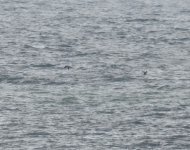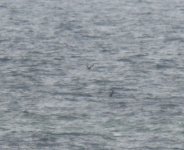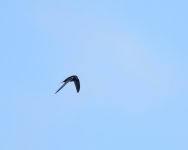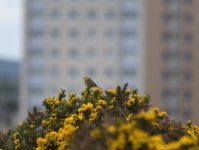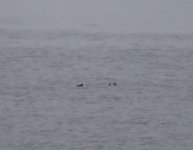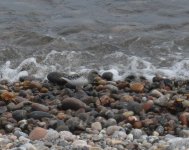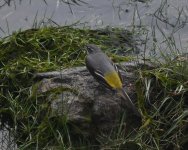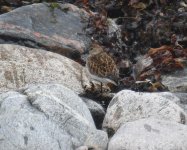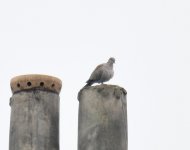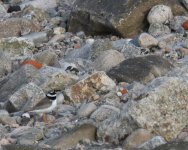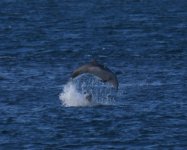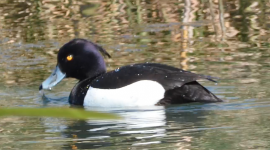Hi Andy - BirdTrack is good, or if you record a lot of mammals you may find Mammal Mapper more convenient as you can log stuff on the go in the field using their app. If you're doing either of those you don't need to send to NESBReC as well for stuff to get through to the annual report or to NBN. Thanks for the records!Hi Alan, I wasn't aware of that, I'll check it out, but I have been adding my mammal sightings to birdtrack. Should I also add to the NESBRec? Or if only one site, which one is best? I actually reported the badger sett to scottishbadgers.org.
-
Welcome to BirdForum, the internet's largest birding community with thousands of members from all over the world. The forums are dedicated to wild birds, birding, binoculars and equipment and all that goes with it.
Please register for an account to take part in the discussions in the forum, post your pictures in the gallery and more.
You are using an out of date browser. It may not display this or other websites correctly.
You should upgrade or use an alternative browser.
You should upgrade or use an alternative browser.
Birds fae Torry (5 Viewers)
- Thread starter Andrew Whitehouse
- Start date
More options
Who Replied?
I've been away for a few days and, pleasingly but predictably, was greeted by two Swifts on my return today. I suspect they may have arrived earlier in the week.

Yeah.... I heard my first ones on Tuesday evening here Andrew.

6 Swifts screaming over Balnagask Road this morningI've been away for a few days and, pleasingly but predictably, was greeted by two Swifts on my return today. I suspect they may have arrived earlier in the week.

Had a walk around the headland this evening. A Collared Dove flying behind the house as I departed was my first of the year locally. One species I've been looking for over recent weeks gave itself up: two Common Sandpipers along the north shore. A pair of Black Guillemots were in Nigg Bay and five Swifts were gathered at dusk.

Today turned out to be reasonably interesting. The weather was warm and sometimes sunny. Swifts were more numerous today with a flock, possibly migrating, of 30 picked out over the city. A pleasant wander round St Fittick's didn't produce a huge amount, although it was good to see my first brood of Moorhens of the year. A Yellowhammer was singing in the trees north of the reedbed and another one was seen on the south bank of the headland. A Black Guillemot was again in Nigg Bay.
The headland was quiet but two Wheatears were around. 48 Common Terns around Greyhope Bay was a decent count. Seawatching started fairly quietly, although a Puffin north was my first of the year. Also moving were a Common Scoter, three Red-throated Divers and another Black Guillemot.
At around 12.40 I picked out two medium sized birds coming steadily but purposefully south about a kilometre out. The hazy conditions made it hard to discern details at first but, despite looking fairly light and slim, they seemed like skuas. This was confirmed when they briefly started chasing after a group of Kittiwakes that they had ousted from the sea. When they came a bit closer and did the same thing with another group of Kittiwakes I could see the shape and pattern more clearly, particularly when they came up against the sky. These were clearly adult Long-tailed Skuas, with lovely long tail plumes and a dark suffusion across the belly merging into the white of the breast. They soon continued on south and I followed them all the way to the new harbour wall, taking some extremely revealing photos at the same time. It's only the second time I've had birds in the spring. Presumably, they were two of the 300+ that went past the Western Isles yesterday but, for reasons best known to themselves, they must have turned right rather than left on reaching the North Sea.
On returning home, it was interesting to see several Bottlenose Dolphins a long way into the harbour, with a couple right up around the mouth of the River Dee channel.
It's possible that I might try another 'big day' tomorrow. Last year at around the same time I managed 80 species. I wonder how well I can do this year.
The headland was quiet but two Wheatears were around. 48 Common Terns around Greyhope Bay was a decent count. Seawatching started fairly quietly, although a Puffin north was my first of the year. Also moving were a Common Scoter, three Red-throated Divers and another Black Guillemot.
At around 12.40 I picked out two medium sized birds coming steadily but purposefully south about a kilometre out. The hazy conditions made it hard to discern details at first but, despite looking fairly light and slim, they seemed like skuas. This was confirmed when they briefly started chasing after a group of Kittiwakes that they had ousted from the sea. When they came a bit closer and did the same thing with another group of Kittiwakes I could see the shape and pattern more clearly, particularly when they came up against the sky. These were clearly adult Long-tailed Skuas, with lovely long tail plumes and a dark suffusion across the belly merging into the white of the breast. They soon continued on south and I followed them all the way to the new harbour wall, taking some extremely revealing photos at the same time. It's only the second time I've had birds in the spring. Presumably, they were two of the 300+ that went past the Western Isles yesterday but, for reasons best known to themselves, they must have turned right rather than left on reaching the North Sea.
On returning home, it was interesting to see several Bottlenose Dolphins a long way into the harbour, with a couple right up around the mouth of the River Dee channel.
It's possible that I might try another 'big day' tomorrow. Last year at around the same time I managed 80 species. I wonder how well I can do this year.
Attachments

Good luck with your 'Big Day' Andrew.

The big day was so 'big' I was too tired to write it up last night! Things begin just after 4pm and finished at 9.20pm. I walked 18 miles around Torry and Girdle Ness and had the aim of beating last year's total of 80 species. The weather was rather similar to last year, with fairly calm conditions through the morning but the wind picking up a bit in the afternoon and evening.
I began at dawn in St Fittick's. A good selection of the usual stuff was singing and I was pleased to hear a couple of vocal Water Rails in the marsh, a species I missed last year. I continued over the headland to the foghorn, getting good views of a Yellowhammer on the way. The sea was very busy, as it was all day. The only problem was looking into the sun. Seawatching was important for the day list, as it's often the best source of 'quirky' birds that aren't expected. The early morning watch was productive, featuring three Arctic Skuas, six Whimbrel, two Red-breasted Mergansers, 23 Common Scoters, two Puffins, 35 Manx Shearwaters, seven Arctic Terns and a somewhat random Mute Swan. I mopped up a few more things around the headland and, after five hours of birding, returned home for breakfast on 70 species. I knew the hard part was coming next though.
I decided to head along the River Dee next, as I knew a few things might be possible there that I wouldn't get around the headland. A male Grey Wagtail showed nicely by the footbridge and a Buzzard soared in the distance, bringing me to 72. I continued downstream back along the north shore of the headland. This eventually proved productive with a Black Guillemot flying into Greyhope Bay, where both Dunlin and Sanderling were along the shore. Perhaps the most surprising birds of the day were picked out north of the harbour: a pair of Wigeon resting on the sea. Quite an unexpected species in May.
I was now on 77 species and it was only mid-afternoon. I headed back to St Fittick's, where there were a few more possible species to look for. I soon found two: Bullfinch and Redpoll. I was hoping my 80th species would also be the 80th and last species I saw last year: Long-tailed Tit. Sadly, there was no sign. They're often hard to find at this time of year. I still had the evening to add to the total and decided it was best to go around the headland again, since there were a number of possibilities. Unfortunately, none of those possibilities showed up. Sometimes the birds just aren't there. The shedloads of common seabirds moving offshore didn't include anything new, although 44 Manx Shearwaters took the day total up to a decent 79.
This was still a pretty successful day, although I missed more of the 'regular' species than I did last year. You can see my full list (minus Common Scoter and Purple Sandpiper, which are concealed).
I began at dawn in St Fittick's. A good selection of the usual stuff was singing and I was pleased to hear a couple of vocal Water Rails in the marsh, a species I missed last year. I continued over the headland to the foghorn, getting good views of a Yellowhammer on the way. The sea was very busy, as it was all day. The only problem was looking into the sun. Seawatching was important for the day list, as it's often the best source of 'quirky' birds that aren't expected. The early morning watch was productive, featuring three Arctic Skuas, six Whimbrel, two Red-breasted Mergansers, 23 Common Scoters, two Puffins, 35 Manx Shearwaters, seven Arctic Terns and a somewhat random Mute Swan. I mopped up a few more things around the headland and, after five hours of birding, returned home for breakfast on 70 species. I knew the hard part was coming next though.
I decided to head along the River Dee next, as I knew a few things might be possible there that I wouldn't get around the headland. A male Grey Wagtail showed nicely by the footbridge and a Buzzard soared in the distance, bringing me to 72. I continued downstream back along the north shore of the headland. This eventually proved productive with a Black Guillemot flying into Greyhope Bay, where both Dunlin and Sanderling were along the shore. Perhaps the most surprising birds of the day were picked out north of the harbour: a pair of Wigeon resting on the sea. Quite an unexpected species in May.
I was now on 77 species and it was only mid-afternoon. I headed back to St Fittick's, where there were a few more possible species to look for. I soon found two: Bullfinch and Redpoll. I was hoping my 80th species would also be the 80th and last species I saw last year: Long-tailed Tit. Sadly, there was no sign. They're often hard to find at this time of year. I still had the evening to add to the total and decided it was best to go around the headland again, since there were a number of possibilities. Unfortunately, none of those possibilities showed up. Sometimes the birds just aren't there. The shedloads of common seabirds moving offshore didn't include anything new, although 44 Manx Shearwaters took the day total up to a decent 79.
This was still a pretty successful day, although I missed more of the 'regular' species than I did last year. You can see my full list (minus Common Scoter and Purple Sandpiper, which are concealed).
Attachments
Cucurrucucu
Cucurrucucu
The pictures are great for us learners. Please post examples more often. I need them!
Pity we can't put up audio. I am quite discombobulated by the racket from the bushes at the moment. Song thrush in one ear, blackbird in the other with robins, willow warblers and wrens carrying on between them. How do I disentangle something rarer from the cacophony?
Pity we can't put up audio. I am quite discombobulated by the racket from the bushes at the moment. Song thrush in one ear, blackbird in the other with robins, willow warblers and wrens carrying on between them. How do I disentangle something rarer from the cacophony?

It should be possible to attach sound files, at least in some formats e.g. MP3. Picking out something unusual is sometimes hard, particularly when lots of other stuff is singing. There's no substitute for learning the common stuff and really listening carefully in the field. Recordings can sometimes help, particularly if you can analyse them with sonograms. Sometimes it's easier to 'see' the sound rather than hear it.The pictures are great for us learners. Please post examples more often. I need them!
Pity we can't put up audio. I am quite discombobulated by the racket from the bushes at the moment. Song thrush in one ear, blackbird in the other with robins, willow warblers and wrens carrying on between them. How do I disentangle something rarer from the cacophony?
Cucurrucucu
Cucurrucucu
I don't seem to have the sort of brain to retain different bird calls. I record things all the time. Which app will work on our rather decrepit computer to give me visuals if not actually IDing a bird song for me?There's no substitute for learning the common stuff and really listening carefully in the field. Recordings can sometimes help, particularly if you can analyse them with sonograms. Sometimes it's easier to 'see' the sound rather than hear it.

Probably the easiest thing is to download Audacity. You can use this for editing recordings and making sonograms. Torry's very own Mark Lewis has a helpful guide for doing this here:I don't seem to have the sort of brain to retain different bird calls. I record things all the time. Which app will work on our rather decrepit computer to give me visuals if not actually IDing a bird song for me?
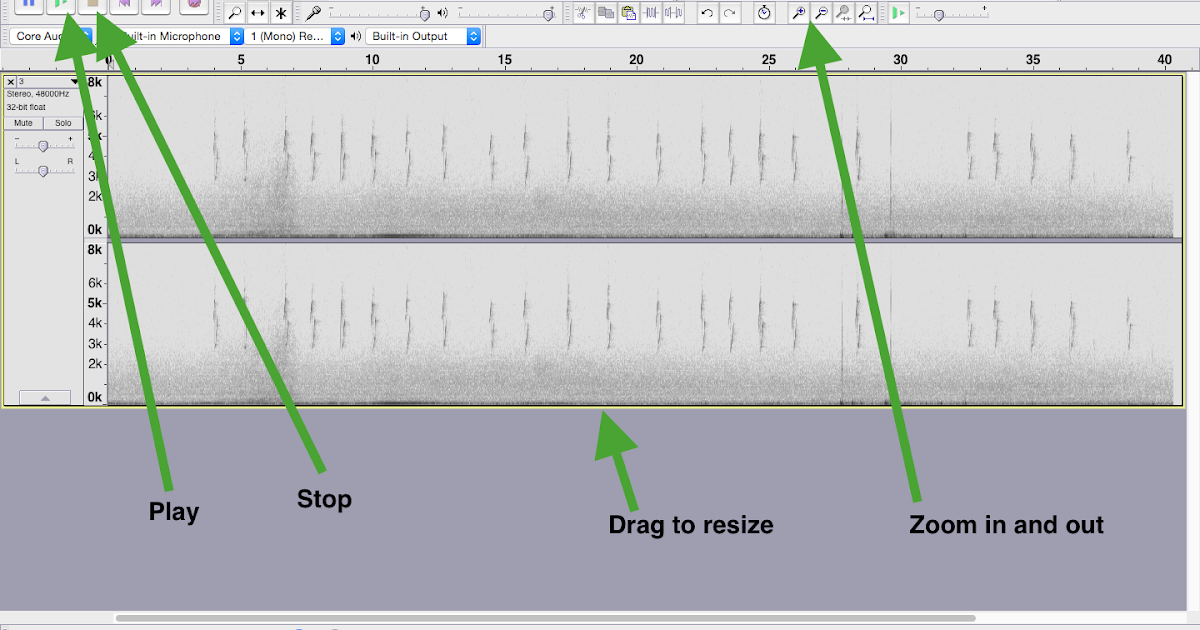
Audacity - the basics
There are plenty of options for birders who want to analyse and edit sound recordings, and produce sonograms depicting what they’ve heard....

I should really mention birds I've been seeing lately, although as sometimes happens at this time of year, things have been pretty quiet and static over the past week.
Tuesday 17th: I had some reasonable hopes for something interesting, following rain and easterlies, but there was nothing resembling a migrant anywhere. 42 Purple Sandpipers and 33 Common Terns was probably the best of it.
Friday 20th: A wander round St Fittick's in the evening with a Yellowhammer about the only thing worth mentioning.
Saturday 21st: I briefly heard a Lesser Whitethroat singing to the north of the Tullos Burn in St Fittick's. Two pairs of Black Guillemots were in Nigg Bay. 40 Common Terns were in Greyhope Bay late afternoon.
Monday 23rd: A chilly evening walk around the headland. Still one Purple Sandpiper in Greyhope Bay. Four Goosander were in the harbour and two female Wheatears were around the headland.
Tuesday 17th: I had some reasonable hopes for something interesting, following rain and easterlies, but there was nothing resembling a migrant anywhere. 42 Purple Sandpipers and 33 Common Terns was probably the best of it.
Friday 20th: A wander round St Fittick's in the evening with a Yellowhammer about the only thing worth mentioning.
Saturday 21st: I briefly heard a Lesser Whitethroat singing to the north of the Tullos Burn in St Fittick's. Two pairs of Black Guillemots were in Nigg Bay. 40 Common Terns were in Greyhope Bay late afternoon.
Monday 23rd: A chilly evening walk around the headland. Still one Purple Sandpiper in Greyhope Bay. Four Goosander were in the harbour and two female Wheatears were around the headland.

I had a pleasant wander round the headland this evening. Not too much was about, although a nice male Wheatear was on the golf course. Ten Turnstone and a Curlew were still around.

Had a breezy walk around the headland this evening. Some positive (and almost miraculous) news is that the Ringed Plovers have two chicks. They've managed to avoid the dog walkers so far at least. Two Manx Shearwaters went north offshore and a Wheatear (probably yesterday's) was on the golf course.
See if you can spot the chicks in the picture. The dolphin picture is from last week, although there was plenty of activity today.
See if you can spot the chicks in the picture. The dolphin picture is from last week, although there was plenty of activity today.
Attachments

Super pictures Andrew!
Gosh!! Well I found two chicks.... did I miss any?
Gosh!! Well I found two chicks.... did I miss any?

Unless I'm also missing some, you got them all.Super pictures Andrew!
Gosh!! Well I found two chicks.... did I miss any?
Cucurrucucu
Cucurrucucu

That's a really good record. Not sure I've seen a Tufted Duck on the ponds before.Delighted to spot a rather shy tufted duck on the Ponds in St Fitticks this morning. Not seen one before
Was it sheltering from this wind?!
View attachment 1448224
Users who are viewing this thread
Total: 6 (members: 0, guests: 6)




